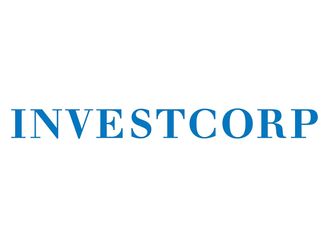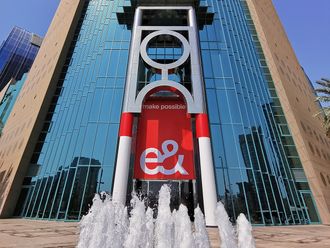Tokyo: The market capitalisation of shares listed on the Tokyo Stock Exchange’s main board hit a record high on Friday, topping a 26-year peak and marking one victory in Prime Minister Shinzo Abe’s campaign to jolt the economy out of a long phase of deflation and stagnation.
The total market capitalisation of the TSE’s first section
rose to 591.30 trillion yen ($4.9 trillion), surpassing the previous peak of 590.09 trillion yen hit in December 1989, when share prices hit record peaks at the height of the Japanese asset bubble.
Although the TSE’s Topix index is still more than 40 per cent below its 1989 peak, the market’s size grew as the number of listed firms increased to 1,881 from 1,161 back then.
Topix closed at 1,647.85, compared to the record high of 2,884.80 hit in 1989.
Investors say the market’s fundamentals look much better now compared to 26 years ago, when Tokyo shares were traded at 60 times earnings. Ratios of price to earnings above 20 are often considered too expensive.
Today, Japanese shares are traded at around 16 times earnings on average, slightly less than Wall Street shares.
“While the market cap may be at a record, today’s valuations of Japanese equities are a world away from what they were at the peak. This reflects the fact that Japanese companies overall have managed to grow earnings per share over time, despite effectively no nominal GDP growth over the past 20 years,” said/sTristan Hanson, head of asset allocation at Ashburton/sInvestments in London.
Dividend yield on Tokyo stocks today is about 1.6 per cent, four times as much as the 10-year government bond yield. Back in 1989, dividend yield was around 0.4 per cent, when the government bond yielded almost six per cent.
At the time, investors came up with many reasons to justify high valuations, such as Q ratio, which measures the company’s value by including hidden gains on assets — a gauge that backfired when asset prices started to fall.
“The whole market hype was based on inflated land prices with layers of corporate debt upon it. In 2015 land prices are still over 50 per cent below their peak in 1989 and still lower than 1980. The Japanese market of course is not a bargain anymore, but it is still inexpensive,” said Michael Kretschmer, chief investment officer at Pelargos Capital in The Hague.
Still, unlike in the US, where new companies such as Apple
and Google led the expansion of market capitalisation, the list of big companies on the Tokyo bourse is dominated by the same old names — with a few exceptions such as Softbank.
“It is a mixed blessing. The top constituents of the market haven’t changed that much, showing lack of metabolism in the market,” said Eiji Kinouchi, chief technical analyst at Daiwa Securities.
The stock market has benefited in large part from the Bank of Japan’s huge stimulus drive, in which it has bought exchange traded funds and its monetary easing has driven down yen, helping exporters.
NTT, a former national telecom monopoly that was the largest company in 1989, is still ranked as the third, with its spin-off NTT Docomo coming at fifth. Japan Tobacco, another former government-owned monopoly, came in the fourth.
The remainder of the firms that populate the top 10 include Toyota Motor and banks, just as in the late 1980s.
The TSE’s market cap now amounts to 118 per cent of the economy. Some investors think the market is at risk of correction when the ratio rises above the 100 per cent mark.
Japan’s nominal GDP rose 1.9 per cent in January-March, but the economy is still five per cent below the peak nominal size reached in 1997.












